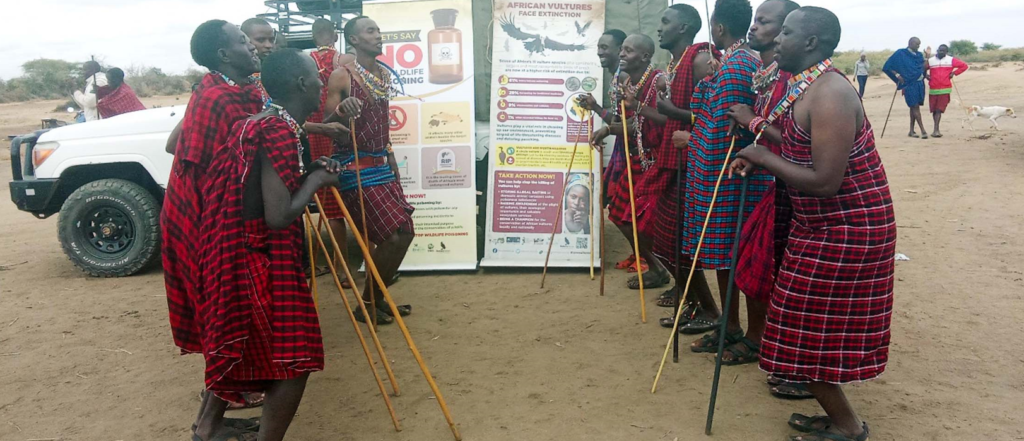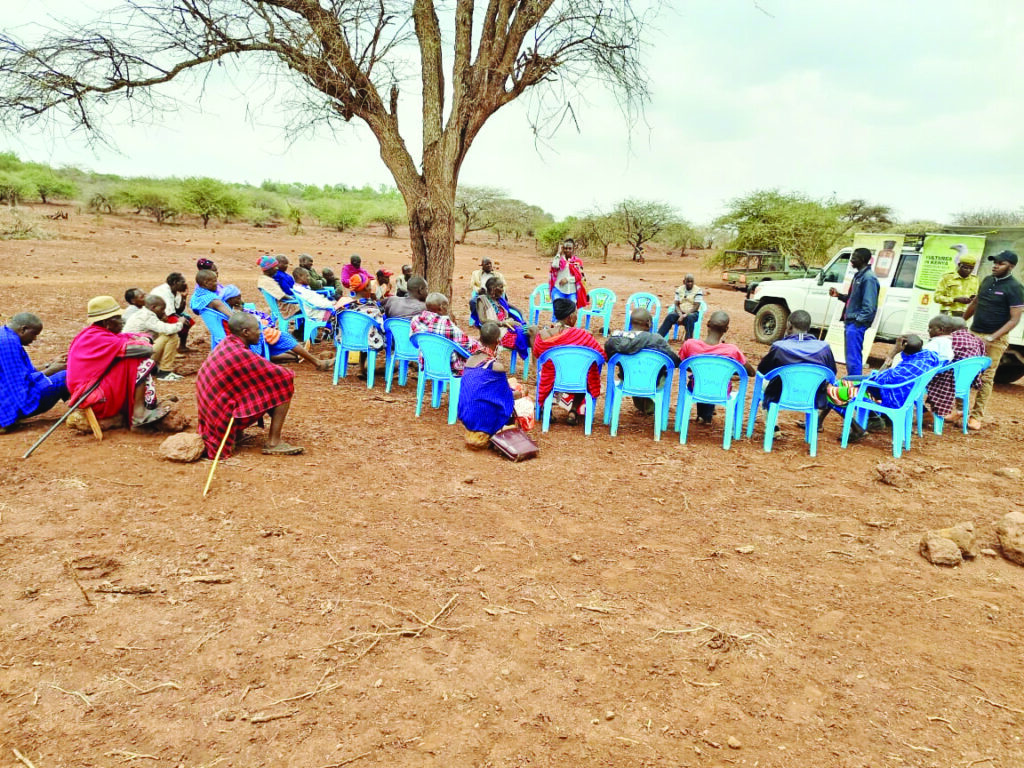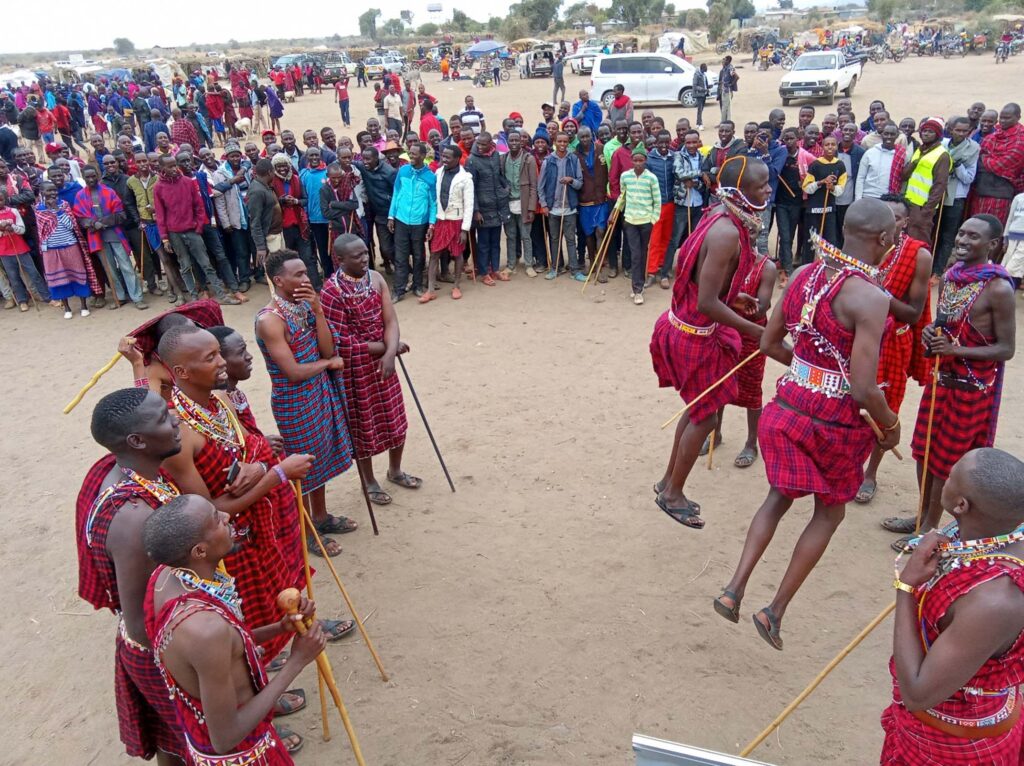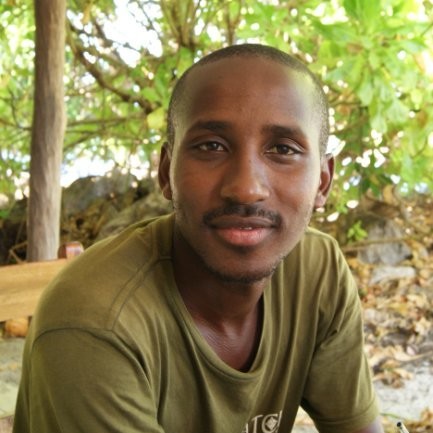Addressing wildlife poisoning in Kenya

Wildlife poisoning, which stems from human-wildlife conflict (HWC), is the leading cause of vulture deaths in Kenya
By Ednah Kulola and John Mwacharo
On a bright mid-morning in Amboseli, Kajiado County, southern Kenya, 99 men and women are gathered in the Enchilishili Social hall at the Eselenkei Group Ranch. Attendees pay close attention to the speakers, as they do at other grassroots public gatherings. Today’s subjects of discussion include vulture conservation and wildlife poisoning. This village gathering is one of several planned by Nature Kenya to educate locals living in the Amboseli environment about the hazards of wildlife poisoning.
Over the past years, Kenya has lost a significant number of its vulture species populations. The country hosts eight vulture species: White-backed Vulture (Gyps Africanus), White-headed Vulture (Rigonoceps occipitalis) , Rüppell’s Vulture (Gyps rueppelli), Lappet-faced Vulture (Torgos tracheliotos), Hooded Vulture ( Necrosyrtes monachus) , Egyptian Vulture ( Neophron percnopterus), Bearded Vulture (Gypaetus barbatus) (Lammergeier) and the Palm-nut Vulture (Gypohierax angolensis) . Four of these species (Hooded, White-backed, Rüppell’s and White-headed vultures) are listed as Critically Endangered while one – Lappet-faced is listed Endangered in the IUCN Red List. In the last 40 years, according to a recently published paper (Ogada et al 2022), Hooded vulture populations have declined by 88 percent, White-backed by 75 percent, Lappet-faced by 65 percent and Rüppell’s by 20 percent.
Wildlife poisoning, which stems from human-wildlife conflict (HWC), is the leading cause of vulture deaths in Kenya. When livestock is preyed on by predators such as lions or hyenas, herders often resort to lacing carcasses with poison in retaliation, aiming to kill the rogue predators. Vultures often fall victim to these wildlife poisoning incidents since they feed on carcasses in large numbers.

“Wildlife poisoning is prevalent in Amboseli. Vultures are the most affected victims. We use such gatherings to sensitize our people on the threats posed by the poisoning“, says Jackson Oloibon, a community vulture volunteer based in Kimana.
“We are thankful to Nature Kenya for this informative session. Over the years, we have witnessed a decline in vulture numbers in this area and assumed that the birds have migrated to other places in search of food and shelter. Today we have learned that these birds are disappearing due to wildlife poisoning” , says Meijo ole Kerina, an Enchilishili village resident.
Upon learning about the importance of vultures in keeping the environment clean and the threats facing them, ole Kerina pledges to mobilize fellow villagers to report anyone who attempts to poison wildlife.
During such meetings, community members ask questions, share their opinions and give suggestions on preventing wildlife poisoning incidents in their areas. Villages adjacent to the Amboseli National Park frequently experience predator attacks on cattle. In retaliation, villagers lace cattle carcasses with poison to kill the predators, including lions and hyenas. These poisoned carcasses are consumed by vultures and other scavenging animals, which are unintended targets. Poisoning is a leading cause of vulture deaths in Kenya.
Chiefs and other administration officers are engaged to reach out to the communities. So far, four meetings have been held in 2023 in Iltilal, Samai, Nolasiti and Enchilishili villages, with 408 community members reached. Stakeholders from the Kenya Wildlife Service (KWS), Maasai Community Wilderness Trust and Big Life Foundation are also involved in the outreach. Scientific data suggests that public education and awareness, among other factors, are key to reducing wildlife poisoning prevalence among pastoral communities in Amboseli and other HWC hotspots like Maasai Mara.

Nature Kenya has recruited 17 community volunteers in the Amboseli area to monitor vulture populations and wildlife poisoning incidents. “Vulture volunteers have supported in increasing surveillance on human-wildlife conflict and also catalyzing community behavior change. We are working closely with these volunteers to enhance vulture conservation efforts in Amboseli and beyond”, says Paul Gacheru, Species and Sites Manager at Nature Kenya.
“Wildlife poisoning is a major threat to vultures in Africa, accounting for more than 60% of their deaths. In Kenya, vultures are caught in the crossfire of human-wildlife conflict as they become victims when feed on poisoned carcasses. Grass-root efforts, such as community awareness creation are critical in educating the community on the dangers of poisoning and the importance of vultures. Community members who are aware this are less likely to engage in wildlife poisoning activities”, says Vincent Onyango, Senior Vulture Conservation Officer for Eastern Africa at BirdLife International.
Nature Kenya is also supporting the construction of predator-proof bomas to reduce cases of big cats and hyenas preying on cattle in homesteads. So far 10 such bomas have been constructed in the Amboseli landscape. In addition, Nature Kenya has supported four primary schools with rainwater harvesting infrastructure.
Amboseli National Park is a designated Important Bird Area (IBA) and Key Biodiversity Area (KBA). Besides having many large wild animals like African Elephants, Black Rhinos, giraffes and lions, the park hosts over 400 bird species with more than 40 birds of prey, including the threatened Secretary bird, Martial Eagle, and Lappet-faced, White-backed, Hooded and Rüppell’s Vultures.
Cover image: Community volunteers engage in traditional dances to create awareness on wildlife poisoning and vulture conservation during market outreaches in the Amboseli landscape. © Ednah Kulola

“Vulture volunteers have supported in increasing surveillance on human-wildlife conflict and also catalyzing community behavior change. We are working closely with these volunteers to enhance vulture conservation efforts in Amboseli and beyond.”
Paul Gacheru, Species and Sites Manager, Nature Kenya